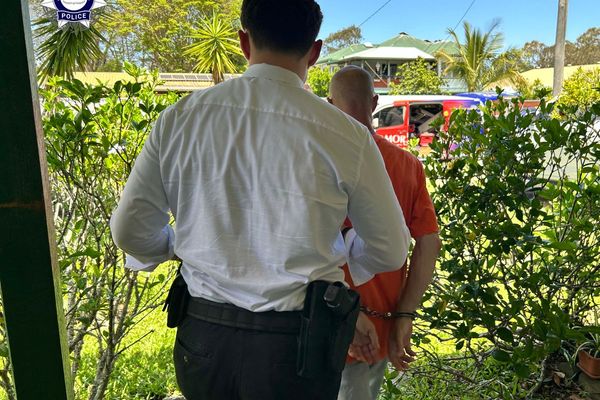When a Scotsman named J.S. Macdonall shipped 1,800 trout eggs into Kashmir in 1900, he introduced the fishing culture to the region, turning Srinagar’s clean and fast-moving streams into a sporting hub for local and foreign anglers. Over a century later, cold-water trout is the most popular fish on the Valley platter, and a growing number of farmers are eyeing opprtunities to export trout to meet European demand, bringing the saga full circle.
The past decade has witnessed a sea change in trout farming since the Jammu and Kashmir (J&K) government decided to allow the entry of private players. In 2019-20, the last year before the COVID-19 pandemic, J&K had 534 farmers producing 650 tonnes of trout; by 2022-23, the industry had grown to 1,144 farmers whose production had shot up more than 200% to a whopping 1,990 tonnes of trout, according to the Union Territory’s Fisheries department.
Fast growth
“It was European experts who motivated J&K towards trout farming. In 1984, they supported a project in Kokernag in south Kashmir and suggested to rope in water-run mill owners to take up trout farming. The idea was to limit the government role to providing seed, feed and monitoring,” former Fisheries Department director R.N. Pandita told The Hindu. “Kashmir’s water and climatic conditions are akin to Europe. Small farmers took up farming in the first phase and now we see more and more educated unemployed youth coming forward,” he added.
Mr. Pandita believes that India, with the help of Kashmiri farmers, could even surpass Denmark, which produces more than 55,000 tonnes of trout per year. “Our water and other resources are of much higher scale than Denmark, which is dominating the European market with trout produce. Trout can even compete with salmon in the near future,” Mr. Pandita said.
Fuelling entrepreneurs’ dreams
Around 100 km away from Srinagar, Abid Hussian Shah dreams of becoming Kashmir’s first trout exporter. The 28-year old Commerce graduate has set up a trout farm named Abdullah Farm House on the slopes of picturesque Daksum in Anantnag district.
With the cold and gushing Bringi stream feeding the farm, which is spread over seven kanals (0.875 acres), Mr. Shah is among many educated youths taking up trout farming in the hope of making it big. “I always wanted to be a job giver and not a job seeker. Trout farming has helped me realize my dream,” said the young entrepreneur, who quit a government job in 2019.
With four raceways, each around 60 feet long and six feet wide, Mr. Shah manages to earn ₹6 lakh from trout farming each year, ₹1.5 lakh from each raceway. “I started with 8000 seeds [or eggs] provided by the government under a scheme. I intend to touch 40 raceways within a year. I found trout farming more profitable than poultry and dairy. I intend to export trout outside Kashmir once my production goes up,” he said.
High demand, solid profits
One kilogram of trout fetches between ₹500 and ₹600 in the local market, where there are two popular varieties: rainbow and brown trout. One raceway for farming costs about ₹5 lakh to ₹6 lakh. The J&K government, under local and national schemes, offers a 50%-60% subsidy to help set up a farm. The J&K Fisheries Department has also employed a trout feed mill from Holland “to achieve better conversion ratio and healthy salable stock”. More than three million eggs are produced and distributed annually.
“The trout demand can be gauged from the fact that we are not able to cater to Kashmir,” said Mr. Shah, who hails from Anantnag’s K.P. Road. Anantnag was declared as the trout district of India in 2018, with over 200 trout farmers.
The adjoining district of Pulwama is also picking up the pace, multiplying trout production from 40 tonnes in 2021-22 to 60 tonnes in 2022-23, with the help of around 120 farmers.
“We do get queries from outside about trout supply. They intend to buy trout in bulk on a daily basis and around one kg in size. We are setting up cooperatives to meet the bulk demands,” said Manzoor Ahmad Samoon, an assistant director in the Pulwama Fisheries Department.
Combating climate change
Climate change poses , shrinking high altitude lakes and fast disappearing water bodies due to climate change a nascent threat to the emerging trout industry in Kashmir. The fish only survive in fast flowing and nutritious streams, with water temperature hovering up to 20 degrees Celsius. However, the government is bracing up to meet the challenge.
Under its Holistic Agriculture Development Plan, the government is offering subsidies to set up Recirculating Aquaculture Systems (RAS), a technology that uses ground water to create in-house ponds for trout farming.
Export ambitions
Hina Parray, 20, became the first Kashmiri woman to set up a ₹2.45 crore-RAS under the Pradhan Mantri Matsya Sampada Yojana scheme in Pulwama’s Awantipora area last year. “Trout farming sector is an empowering sector for women. Hina and many other women in Pulwama have set up units,” Mr. Samoon said.
Ms. Parray, an MBA graduate and an avid trout angler in south Kashmir’s Pahalgam, has engaged a scientist from Darjeeling to cater to the needs of the fish. “A processing unit is also being set up to start exporting trout across the country and outside. It’s my dream to export outside,” Ms. Parray said.
A large RAS project can produce 10 metric tonnes of trout annually. Two RAS projects are already functional in Kashmir and around a dozen fresh applications are in the pipeline, as trout farming finally starts attracting bigger businesses as well. Invoking the global popularity of Kashmiri apples, a senior Fisheries Department official hoped Kashmiri trout could soon become the Union Territory’s next big export product.







